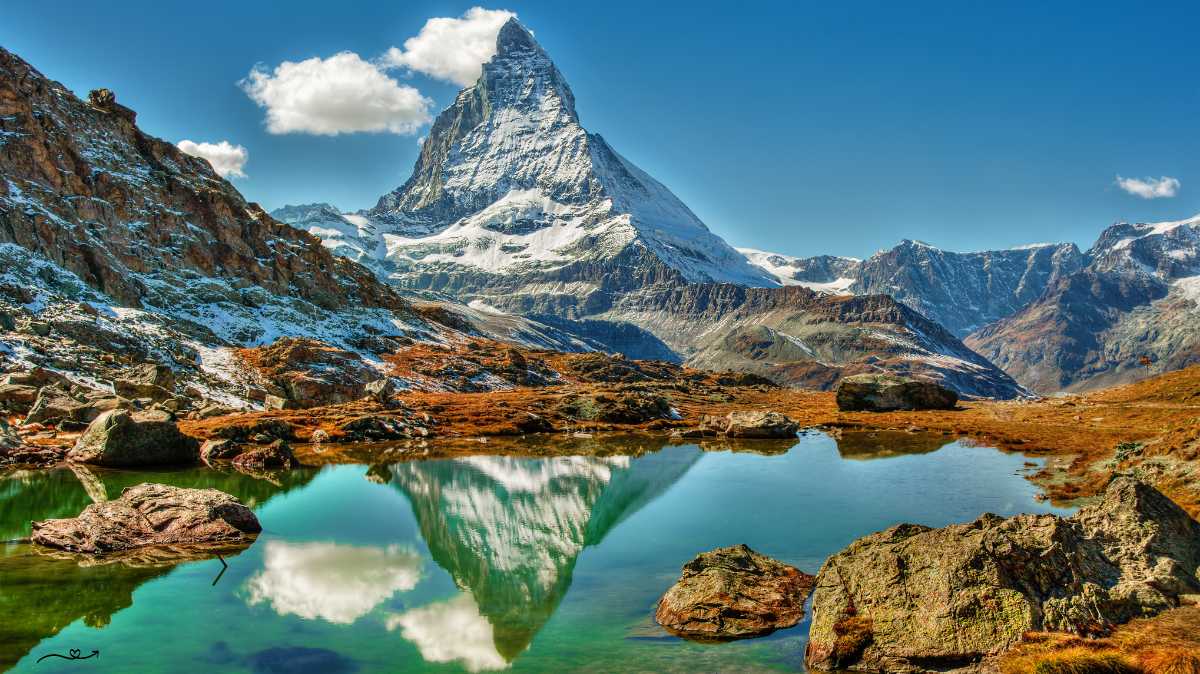When it comes to iconic peaks, few can rival the Matterhorn, Switzerland’s towering pyramid of rock, ice, and legend. But while many travelers hope for the picture-perfect postcard of clear blue skies, there’s something profoundly magical about the Matterhorn under a cloudy sky. It’s as if the mountain itself is playing a game of hide-and-seek with the heavens, cloaking its sharp ridges in mist and mystery. Let’s dive deep into this phenomenon, explore the wonders of viewing the Matterhorn when clouds decide to join the party, and discover why sometimes, a little weather drama can make the experience even more breathtaking.
Why the Matterhorn Under a Cloudy Sky is a Must-See
Picture this: You’re standing in Zermatt, the quintessential Alpine town at the base of the mighty Matterhorn. Instead of the typical touristy scene of the mountain standing sharply against a backdrop of blue, clouds swirl around its peak like a protective blanket. The Matterhorn under a cloudy sky doesn’t just look different—it feels different. There’s an aura of mystery, a sense of power, and an almost mythological vibe that adds depth to the experience.
The Cloudy Sky Effect: A Dynamic Beauty
Clouds can drastically alter the way the Matterhorn appears. One moment, it might seem like the entire mountain has vanished, leaving you wondering where such a gigantic landmark could hide. Then, as the clouds thin, parts of its jagged edges emerge, giving off an almost ghostly vibe. Here’s why this variation is incredible:
- Enhanced Dramatic Effect: The changing visibility adds layers to the mountain’s appearance. The shadow-play between rock and cloud creates a dynamic viewing experience.
- Photography Goldmine: If you’re a photography enthusiast, the interplay between clouds and the Matterhorn creates opportunities for some jaw-dropping shots. Forget the generic clear-sky photo—you’re getting a masterpiece.
- Serene and Calm Atmosphere: With fewer tourists flocking to snap photos in cloudy weather, the mountain feels more tranquil. You can soak in the natural beauty without fighting for space.
Fun Fact: Did you know that the name “Matterhorn” derives from the German words “matte” (meadow) and “horn” (peak)? The mountain itself is as legendary as its name, towering at 4,478 meters (14,692 feet).
What to Expect When Visiting the Matterhorn Under a Cloudy Sky
You might be wondering, “Is it worth visiting when the skies aren’t clear?” The answer is a resounding yes! The Matterhorn’s mystique under a cloudy sky brings a few surprises you might not expect:
Sudden Visibility Changes: Clouds move quickly in the Alps, and what seems like a gloomy, overcast day can turn into a spectacular reveal in a matter of minutes. Keep your camera ready—nature’s surprises are fast and fleeting!
Weather Shifts: Be prepared for sudden changes in temperature, especially if you’re planning on hiking or heading up the Gornergrat railway. Bring layers!
Fewer Crowds, More Tranquility: Cloudy skies often deter casual tourists, which means you’ll enjoy fewer crowds and a more serene experience.
Wildlife Sightings: Overcast days can also mean more wildlife activity. Mountain goats and marmots might venture closer to your path without the buzz of tourists everywhere.
Best Places to Experience the Matterhorn Under Cloudy Skies
The Matterhorn doesn’t just dominate the skyline in Zermatt. There are several key spots from where you can catch the mountain in all its cloudy glory:
Gornergrat Railway: This scenic train ride offers unparalleled views, even when the weather’s moody. Clouds rolling through the mountain ridges make the journey especially ethereal. Read more about the Gornergrat Railway experience here.
Matterhorn Glacier Paradise: The highest cable car station in Europe provides a panoramic view of the mountain—and with clouds swirling around, it’s nothing short of cinematic.
Hiking Trails in Zermatt: There’s no better way to connect with the landscape than hiking the trails around Zermatt. Even under cloudy skies, the experience is surreal. (Pro tip: The Five Lakes Walk is particularly rewarding on an overcast day when the lakes reflect moody skies.)
How to Prepare for a Visit to the Matterhorn Under a Cloudy Sky
What to Pack
- Layered Clothing: The Alps can be unpredictable, so pack layers that can keep you warm when temperatures drop.
- Waterproof Gear: Cloudy skies can turn into rainy skies fast. A lightweight rain jacket is a must.
- Camera with Extra Memory: Trust us—clouds make for some of the best shots of the Matterhorn. You’ll want all the storage space you can get.
Best Time of Year
While the Matterhorn is stunning year-round, spring and fall are prime times to catch it under a cloudy sky. These shoulder seasons offer fewer tourists and a greater chance of moody weather. Winter, on the other hand, blankets the peak in snow, adding another layer of magnificence, especially during cloudy days.
FAQs About the Matterhorn Under a Cloudy Sky
1. Is the Matterhorn worth visiting in cloudy weather?
Absolutely! Cloudy weather adds a mysterious, almost mystical charm to the Matterhorn. You’ll experience fewer crowds, stunning dynamic views, and, if you’re lucky, moments where the peak dramatically emerges from the clouds.
2. What are the best viewpoints to see the Matterhorn in clouds?
The Gornergrat Railway, Matterhorn Glacier Paradise, and hiking trails around Zermatt provide stunning viewpoints. The shifting clouds often add drama to these vistas.
3. Can I hike around the Matterhorn in cloudy weather?
Yes, but it’s important to be prepared. Weather in the Alps can change quickly, so bring waterproof gear, wear layers, and stay updated on conditions before setting out.
4. What should I pack for a trip to see the Matterhorn in overcast conditions?
Layered clothing, a rain jacket, sturdy hiking boots, and a camera with extra memory are essential. The beauty of the Matterhorn under clouds is often fleeting, so you’ll want to capture the moment.
Author

An aspiring business leader, I am working towards my dream of graduating from Stanford University with a degree in Business Management. Passionate about sharing knowledge, I strive to empower others through education and collaborative learning.
View all posts


